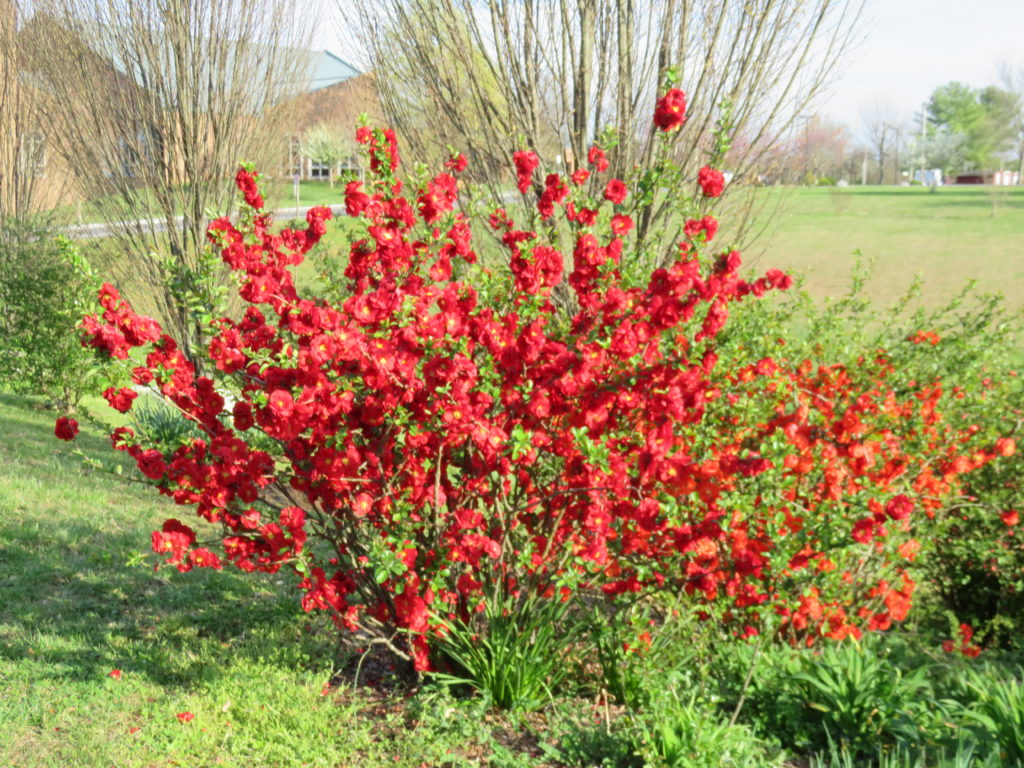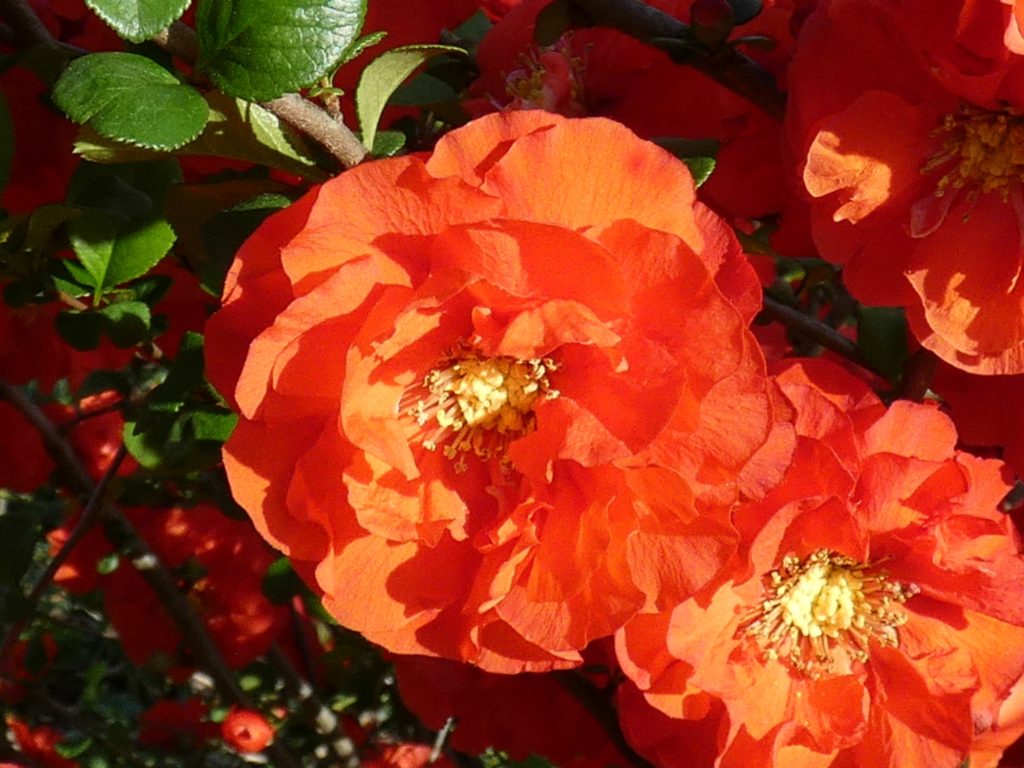D

Flowering quince (Chaenomeles spp) is an early spring flowering shrub treasured for its brightly colored blooms (USDA hardiness zones 5-9). Old fashioned quince shrubs produced small amounts of fruits (quince) which were gathered and made into yummy jelly in the autumn kitchen. Old fashioned varieties often grew 10-12 feet tall shrubs and produced small sharp thorns which made picking the fruits a challenge.
Now appearing in local garden centers are three new compact cultivars in the Double Take® series called ‘Orange Storm’, ‘Scarlet Storm’ and ‘Pink Storm’. They were developed by Dr. Thomas Ranney at North Carolina State University Extension Center in Mills River, NC. Plants grow 4-5 feet in height and about the same in width (120-150 cm).
Their large vibrant double flowers are stunning in the early spring landscape. Blossoms measure almost 2 inches across and are visited in abundance by bees. Leaves emerge after blooms drop off. Once shrubs are established, usually within 1-2 years, plants are very heat and drought tolerant. Branches are thornless and deer resistant. Double-Take flowered quinces do not produce fruits (quinces) and are easy to care for.

Double Take quinces are easily grown in average, moist, well-drained soil in full sun to partial shade. Best flowering occurs in full sun. They adapt to a wide range of soil conditions, but prefer well-drained loam soil. Plants bloom on old growth. Avoid heavy pruning. After flowering, quinces may be pruned as specimen shrubs, espaliers or hedges. Promptly remove root suckers to control possible spread. Feed with a slow release fertilizer such as Osmocote® or Nutricote® at package directions.
Mostly disease and insect free, quinces are fireblight and scab susceptible in some parts of the U.S. Double Take quinces are more disease resistant than the species. Aphids, mites and scale can cause significant damage to the new spring growth. Chlorosis (yellowing of foliage) can occur in high pH soils. Flower buds are susceptible to significant damage from early spring frosts.
Personal favorite: ‘Scarlet Storm’ with abundant double scarlet red flowers are real standouts.
Landscape uses: Spring flowering specimen or group in shrub border or cottage garden. Branches may be clipped into a low hedge. Collect winter wood to force winter blooming indoors. Branches make gorgeous cut flowers.

 Posted in
Posted in 
